Vegetable Gardening For Small Spaces
Edible crops can be grown in the smallest of spaces and, as these small vegetable garden ideas show, you are not restricted by only having a modest garden, backyard or patio.
Now is the perfect time to have a go at starting your own homegrown crops. Carefully planned, you can incorporate a vegetable garden into your small garden ideas to produce all kinds of crops – from herbs, through to root vegetables and fruit trees. So take advantage of tiny spaces to grow delicious options to add a special homegrown flavor to your meals.
Whatever vegetable garden ideas you are looking for, these tips and designs will give you inspiration for layouts, where to plant your vegetable and fruit crops, and the best and easiest vegetables to grow for the highest yields.
Small vegetable garden ideas
Creative small vegetable and kitchen garden ideas involve making the most of the limited space available. These small vegetable garden ideas will get you started.
1. Grow crops that offer rich rewards
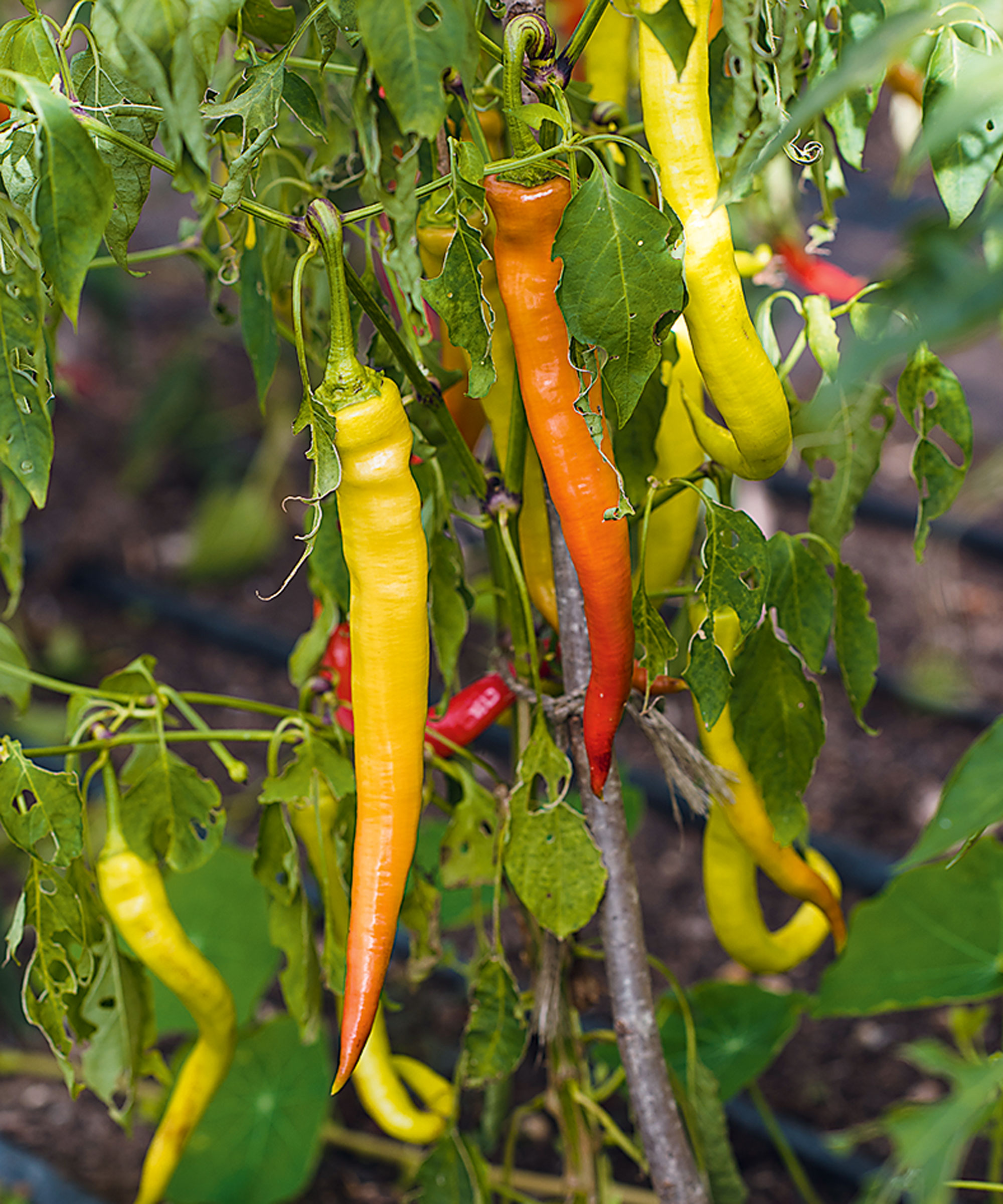
(Image credit: Future/Camilla Reynolds)
The trick is to grow small amounts of different crops that offer big rewards. Opt for easy bumper crops like cut and come again salad leaves, chilli plants, fresh herbs, leafy greens, and super-sweet peas straight from the pod.
'Over the years certain plants and varieties have emerged as front runners in the time/reward ratio,' says Sarah Raven. 'They're the ones that are quick and easy to grow, so they will do well even if you don't have much gardening experience. Whenever I'm asked by new grow-your-owners which plants to go for I say cut-and-come-again leaves every time.'
2. Use trellis for compact small vegetable garden ideas
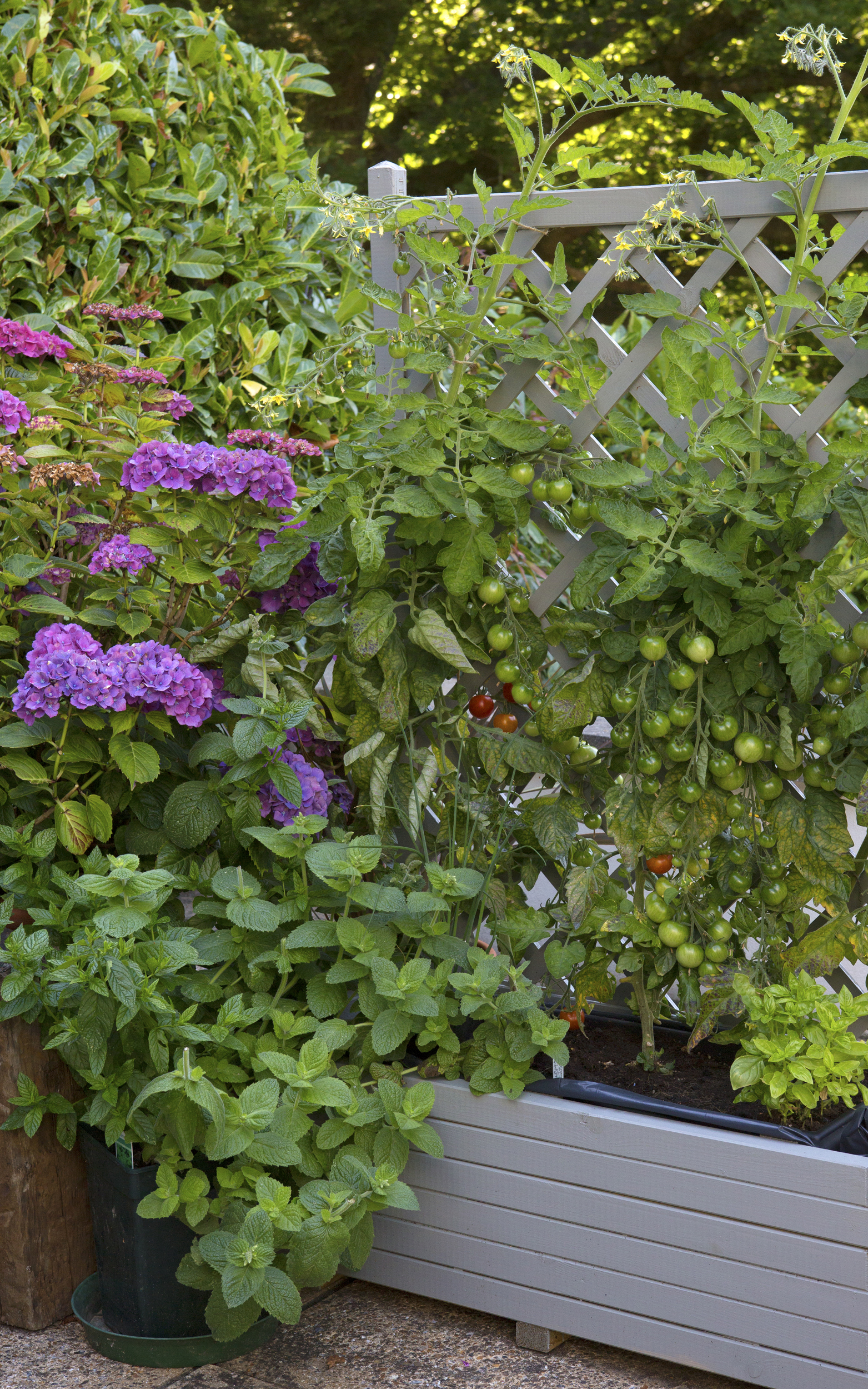
(Image credit: Leigh Clapp)
A super-smart small vegetable garden idea is to try vegetable garden trellis ideas, to make the most of the space by using vertical surfaces to grow crops up – this is particular useful if you are looking for ways to incorporate vegetable plants into courtyard garden ideas.
Add in some herbs, which make excellent potted plants and can also be beneficial for companion planting, and you could have all you need to rustle up a delicious homegrown meal at your fingertips.
3. Position a small vegetable garden near the kitchen
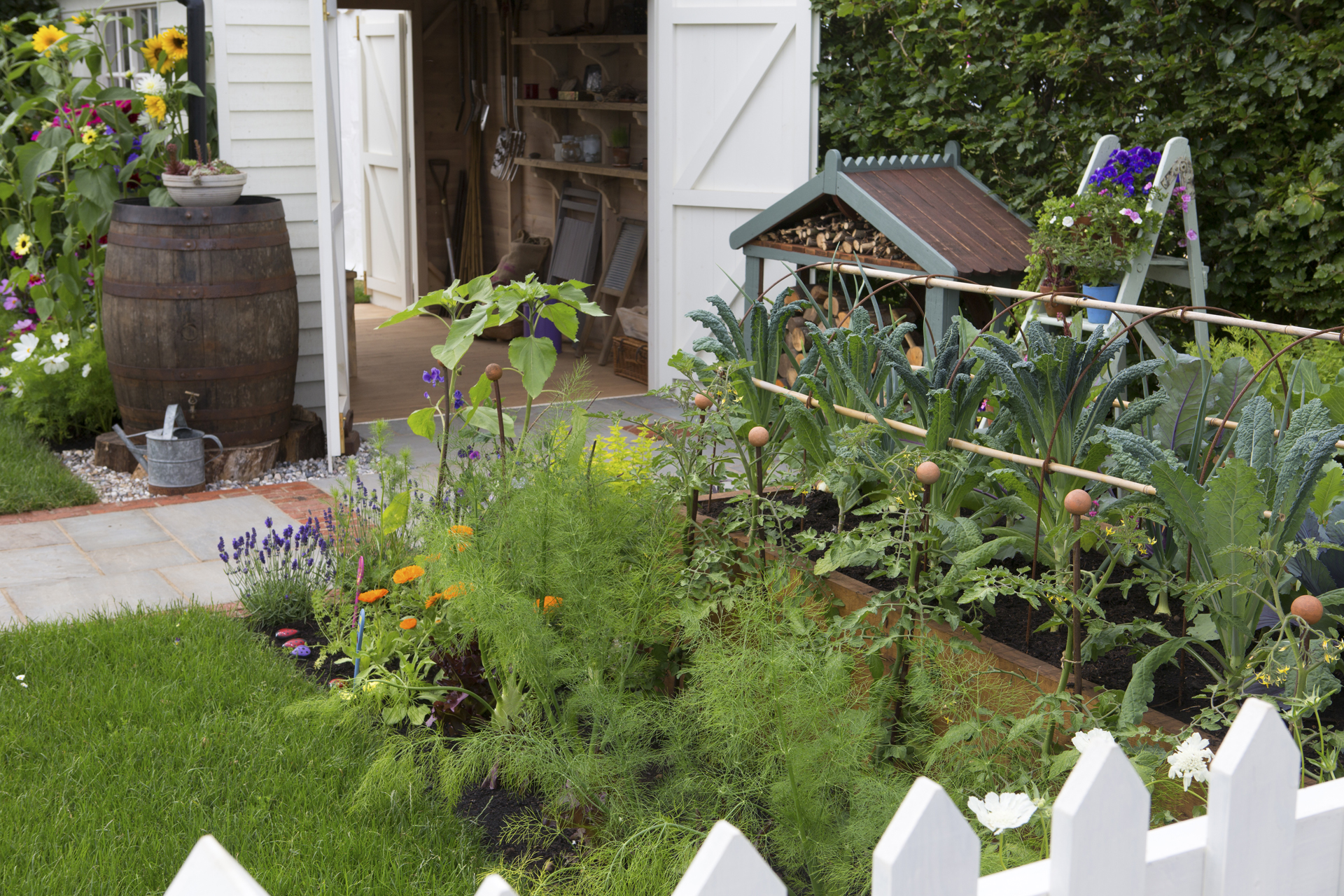
(Image credit: Leigh Clapp)
'Most of the plants going into vegetable patches are annuals. They are working with a short timescale and need to grow rapidly. To enable them to put on this performance, they need all the help they can get and plenty of food to fuel this growing process. That's only possible in full sun,' explains expert plantswoman Sarah Raven.
This small vegetable garden idea allows placement of the crops closer to the kitchen for ease of use, and so you can pay close attention to any pests and diseases.
4. Combine small vegetable garden ideas with blooms
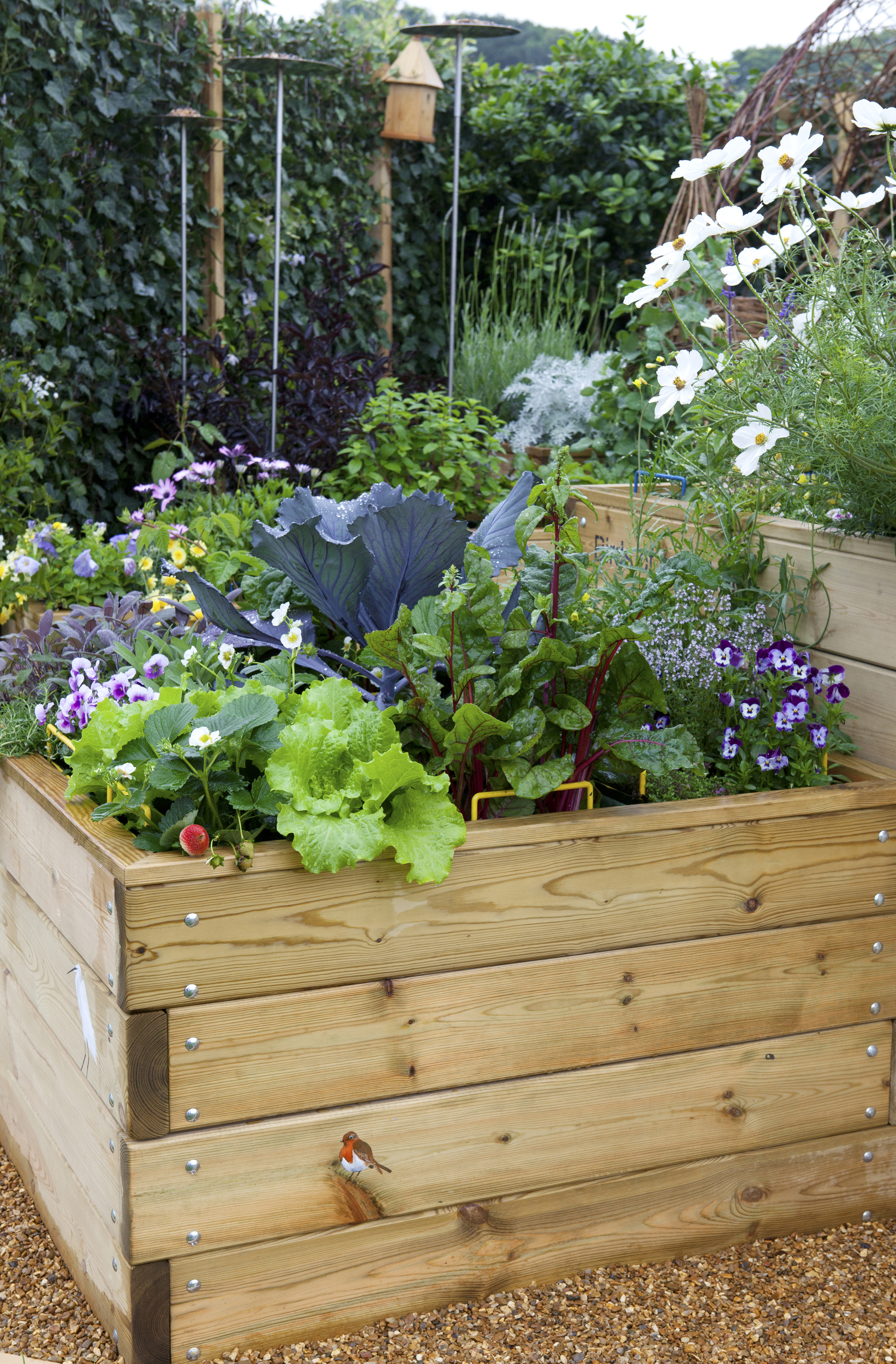
(Image credit: Leigh Clapp)
If yours is a small garden, you will want to plan for the best of both worlds, with a small vegetable garden combined with the planting of blooms. If this is the case, treat your vegetables just as you would other plants, growing three of the same vegetables alongside repeated flower planting to create an impactful, cohesive look.
5. Grow vegetables in pots
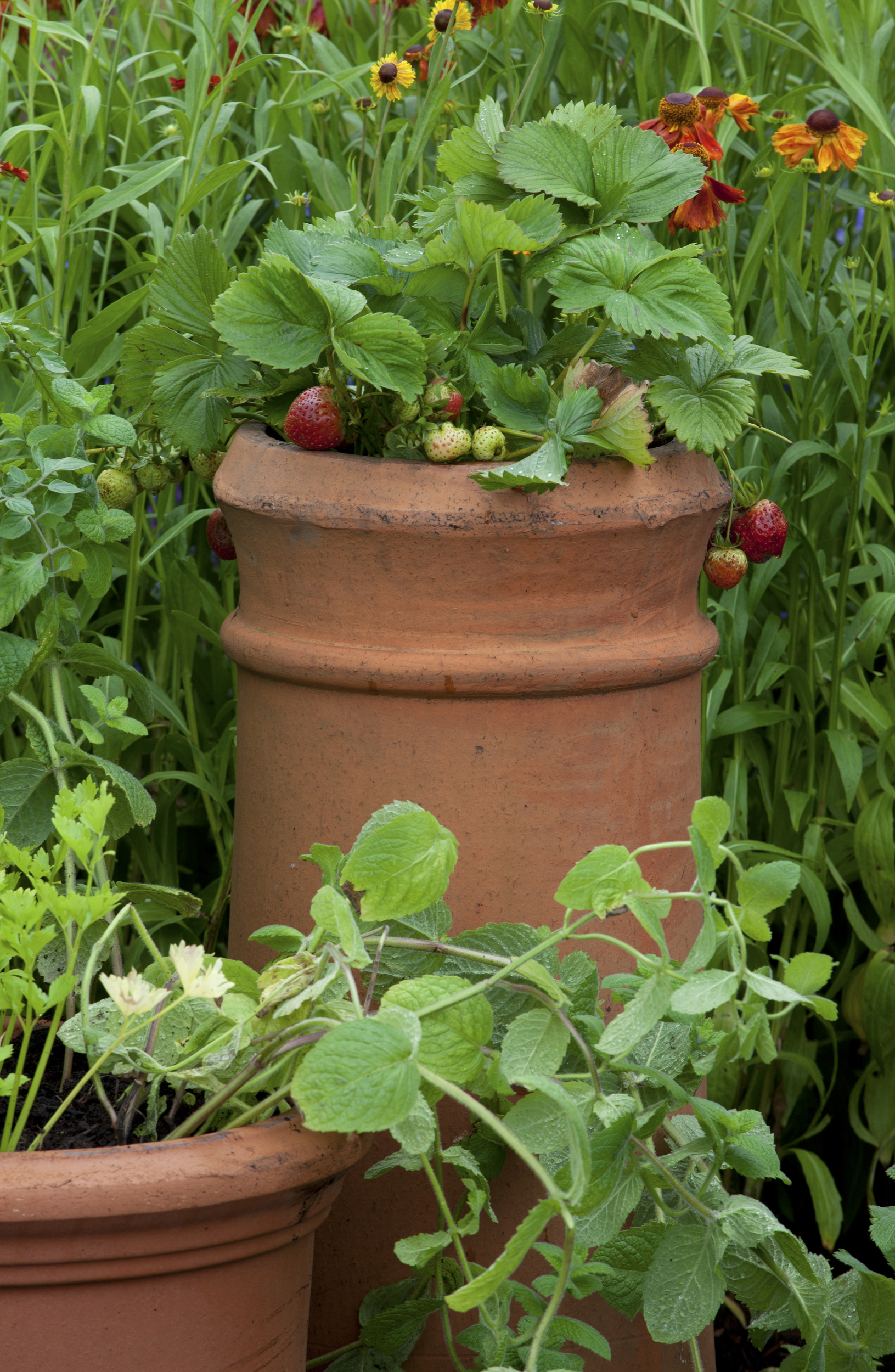
(Image credit: Leigh Clapp)
Shady areas are often a problem in smaller gardens, so growing vegetables in containers is an ideal choice to find the sunny spots when needed, and can even be used in balcony gardens.
Tubs, pots, troughs or even hanging baskets can be used to grow vegetables, fruit and herbs.
Gardening expert Carol Klein says: 'There are loads of vegetables you can grow in pots. Absolutely masses of them. All the salad crops you can grow so easily.'
Potted edibles and other container gardening ideas are particularly convenient for small vegetable gardens using a patio or courtyard space. Planting a large container with flowers and a range of crops, such as different salad leaves and chillies, is both decorative and practical. Regularly harvesting leaves of vegetables, such as chard, and lettuce planted in groups, will avoid crowding.
Make sure that your crops and containers are compatible with the growth of the plants. In general, containers need to be 4 inches wider and deeper than the root ball.
Use a good quality, rich potting mix that has plenty of organic material, and water and fertilize regularly for the best cropping.
Shallow containers – around 12 to 16 inches deep – are suitable for shallow-rooted herbs and annual vegetables, as you can replenish the soil each season when you replant.
Larger choices, such as aubergines or tomatoes, do best as one plant per container.
Herbs are excellent potted plants, as most require good drainage, so why not create a herb garden using containers.
'Herbs are the easiest edible plants to grow and deserve a spot on any container gardening list. Try thyme, chives, mint, sage, parsley, oregano and rosemary outdoors,' says chartered horticulturist and TV gardening expert David Domoney.
With fruit trees, check the variety to match the size, as they will stay in the same pot for a number of years before needing to be repotted. Citrus trees can be grown in pots outdoors in summer and then brought inside during winter, and olives are also content in pots, making them one of the best trees for a small garden.
Whatever container you choose, especially repurposed ones, make sure:
- The material is safe and you won't accidentally leach any chemicals into the soil, such as lead.
- If using salvage, check if it has had contact with agricultural chemicals or held any toxic substances. You could still use a planter you are not sure about as a cachepot, by placing a safe container inside.
- Place crocks or gravel at the base of all containers for drainage.
6. Build a raised bed vegetable garden
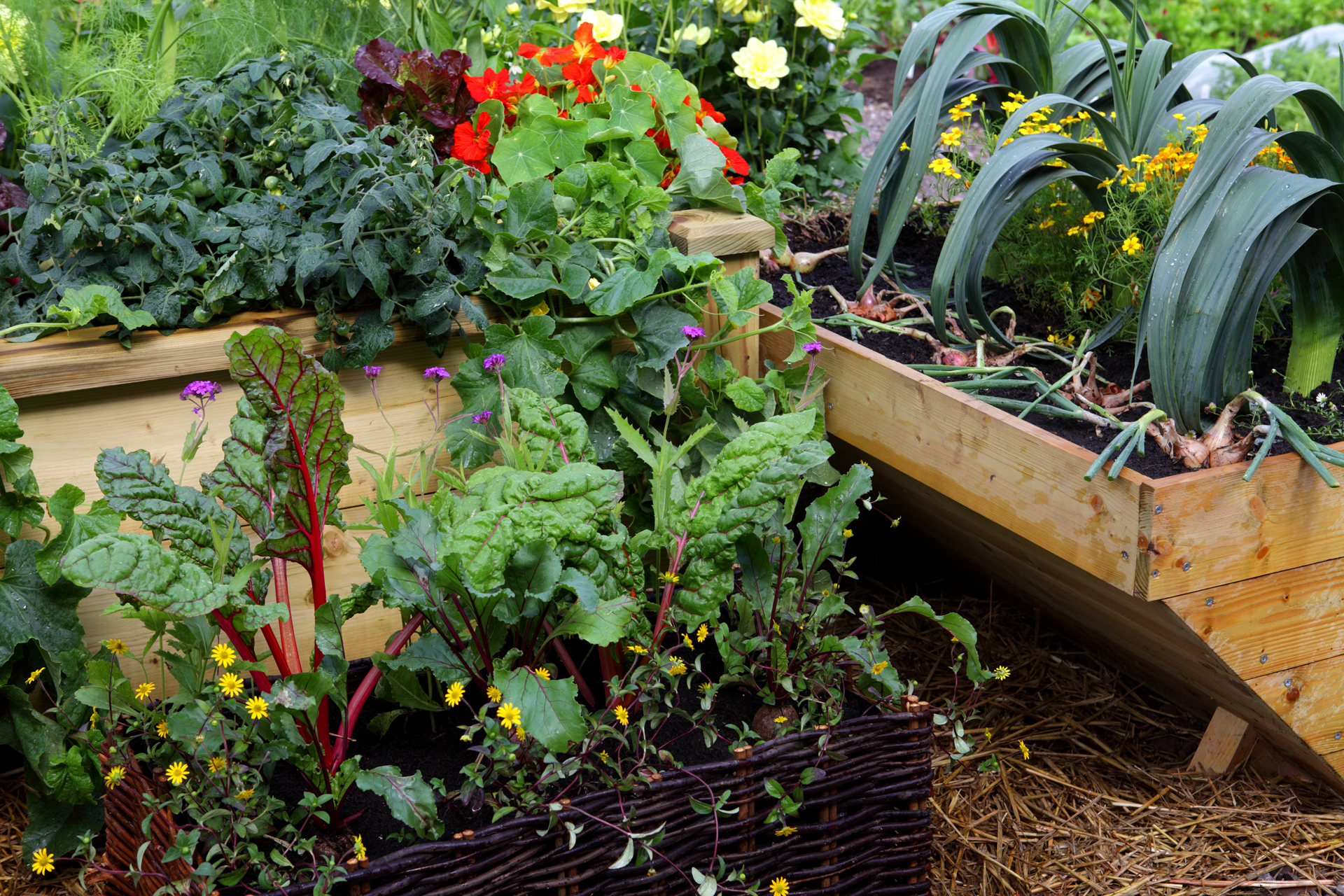
(Image credit: Leigh Clapp)
Raised garden bed ideas are a popular way to grow edibles in a small vegetable garden.
Wood, brick or sleepers can be used to frame your bed, and there are plenty of kits on the market – or you can follow Monty Don's raised bed tips. Fill your beds with good-quality soil, and then add your fruit or vegetable crops.
You may like to plant in neat rows or decorative patterns for a mini potager effect, mixing in some companion planting.
Rotating the crops ensures pests and diseases don't build up, and also makes the nutrients added by one plant available to the subsequent plants.
7. Look to vertical vegetable garden ideas to save space
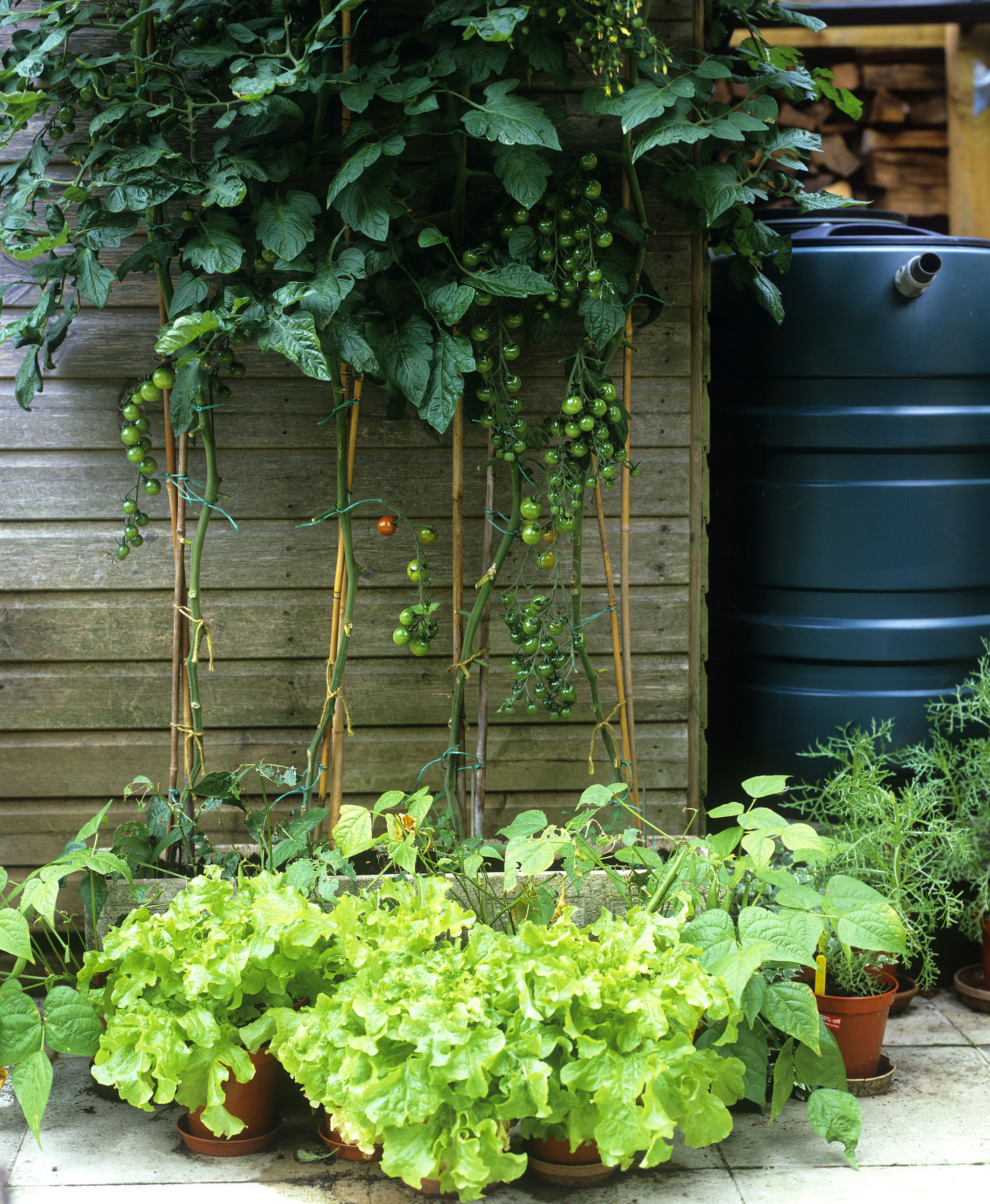
(Image credit: Leigh Clapp)
Experiment with climbing crops to make the most of space when you plan a small garden:
- Cover fences or walls with wire, twine or lattice for beans, peas or espaliered fruit; train vines up pergolas, and create edible screens or step-over edging.
- Attach pots to walls – or you could use one of the many commercial living wall systems available.
- Outdoor plant stands tiered, using old ladders, stacked containers, palettes or metal stands, also offer the opportunity for a vertical vegetable garden and many different options for small vegetable garden ideas, even in a small garden with decking.
Do some research for a system that suits your location, and experiment with which crops work the best. In general, go for reliable choices, such as clumping and running herbs that regenerate after being cut back hard, red perilla, salad leaves, sugar snap peas, edible flowers and strawberries.
TOP TIP: If a wall is in a shady spot, it can also be painted white to reflect light back onto a climber, which will also make a small garden look bigger.
8. Plant a small vegetable garden amongst flowers
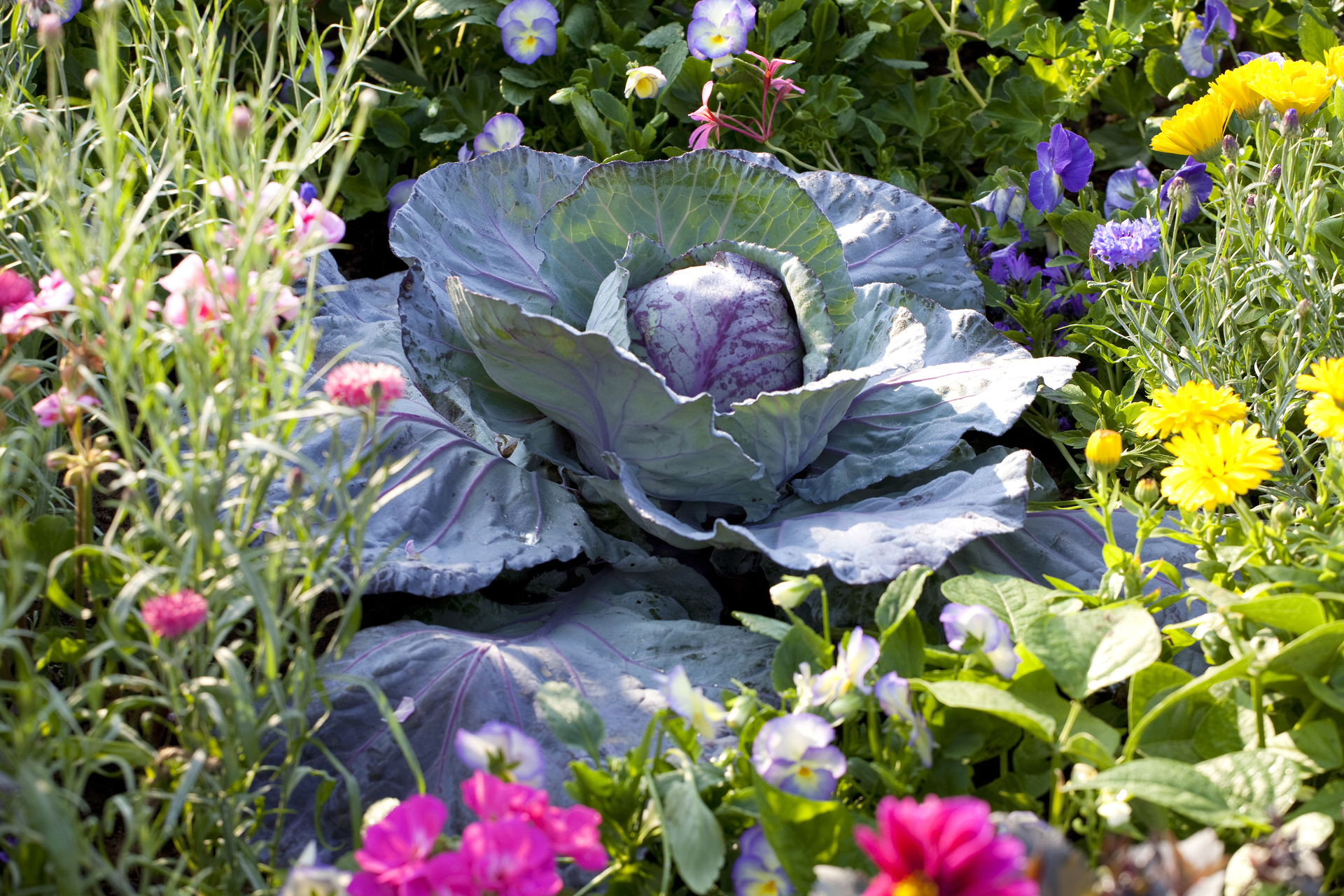
(Image credit: Leigh Clapp)
Small vegetable garden ideas require a bit of creative thinking. Mix edibles among your flowerbeds to emulate the traditional potager cottage garden ideas of the past, where flowers, vegetables, herbs and fruit were planted wherever they fitted.
The vegetable or fruit plants can blend attractively beside other plants. Decorative choices to tuck in for small vegetable garden ideas include frilly lettuces and cabbages, architectural cardoons, runner beans and peas scrambling up tepees, rainbow chard and feathery asparagus and fennel.
An informal scheme, with scattered edibles, allows for staggered cropping and avoids the situation of feast or famine and patches of empty soil.
Dwarf fruit trees can be planted directly into an ornamental bed, valued for their pretty blossom as well as fruit, and intermingled with roses as ideal companions.
Smaller edibles, such as chives, parsley and ferny-topped carrots, make attractive edging to garden beds. Perennial herbs look good year-round, such as sage and ground-covering thyme with its pretty flowers.
Adding veg and fruit among your flowerbeds has a further practical advantage of creating a mosaic tapestry of colors and scents that confuses insect pests, making it difficult for them to find the veg or fruit they want to feed on. Flowering herbs will also attract beneficial insects.
WARNING: Be sure, though, to avoid space-loving fruit and vegetable plants that don't play well with ornamentals, including berries and larger root vegetables like potatoes.
9. Grow for color in a small vegetable garden
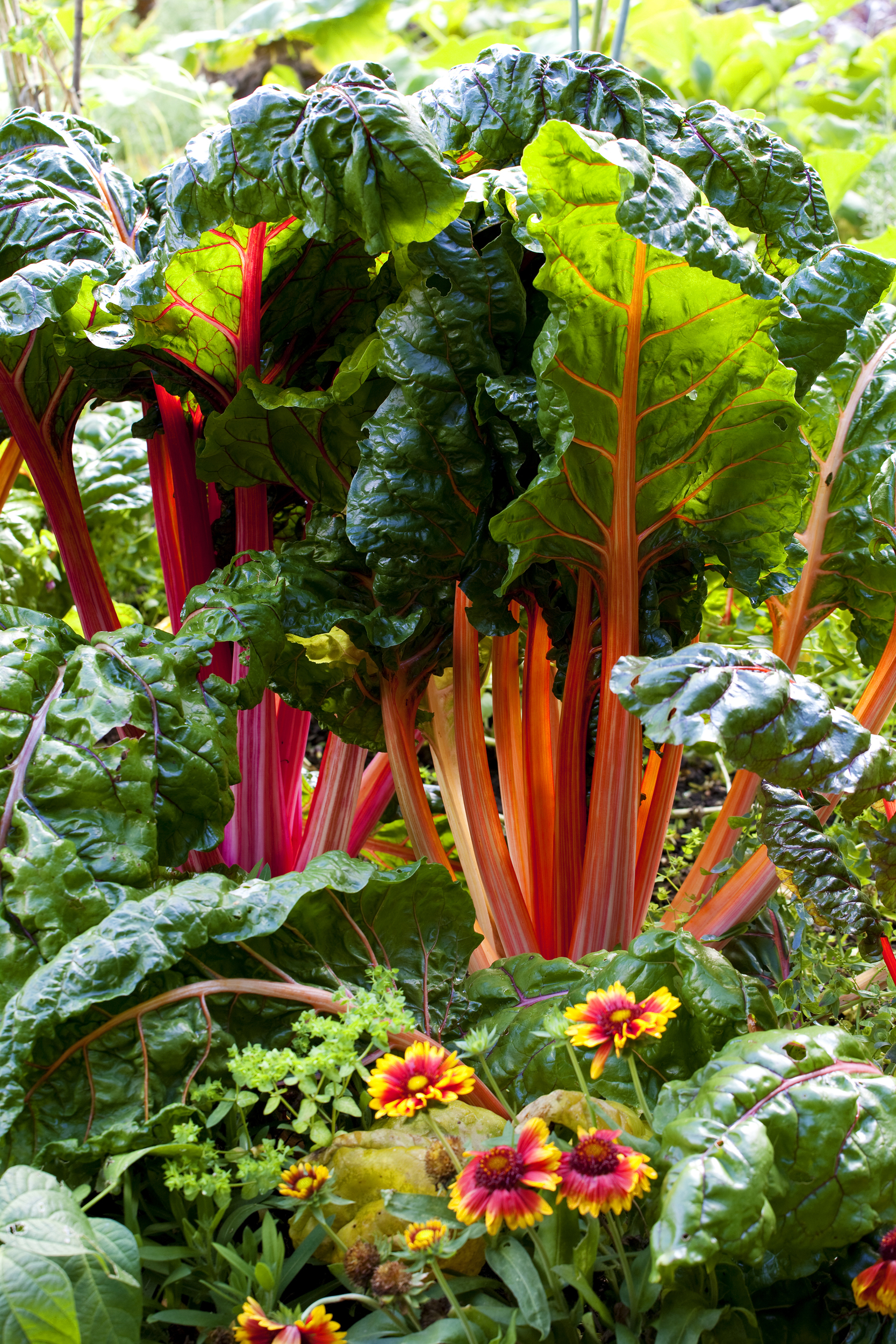
(Image credit: Leigh Clapp)
Of course you'll want to grow what you love to eat, what suits your space, its position and soil type, but if you choose to grow crops for color in a small vegetable garden, you will be rewarded two-fold with a tasty harvest that looks good while you are growing it. This rhubarb is a case in point.
10. Create a small vegetable garden in a window box
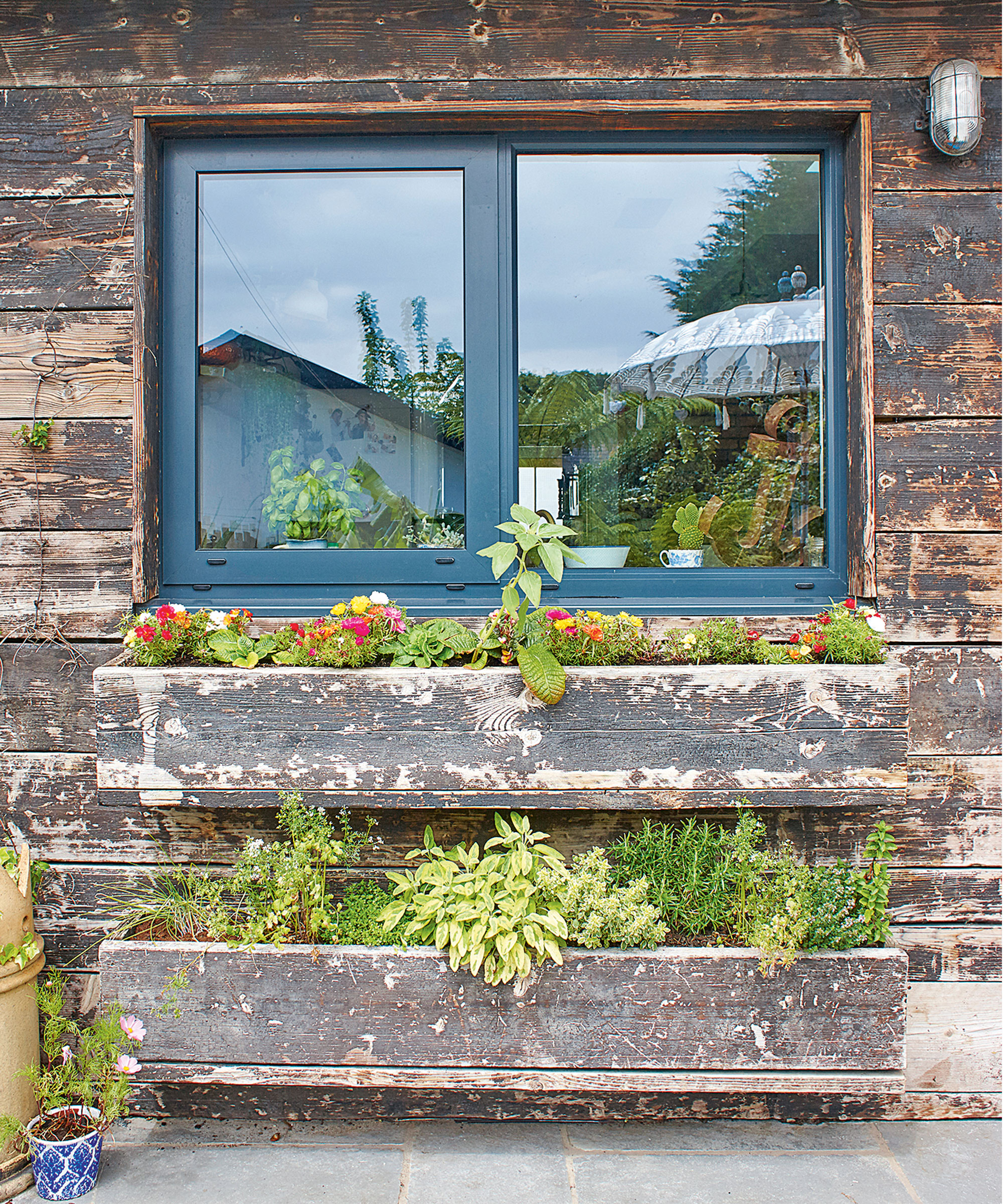
(Image credit: Future / Joanna Henderson)
Window boxes are most suited to low-growing edibles, such as herbs and salad leaves, and need to suit the conditions that prevail at your window.
Planting 'recipes' to try include a mix of different mints, strawberries interspersed with parsley, or a one-stop salad garden with micro greens, salad leaves, chives, basil and edible flowers.
11. Grow fruit trees in containers
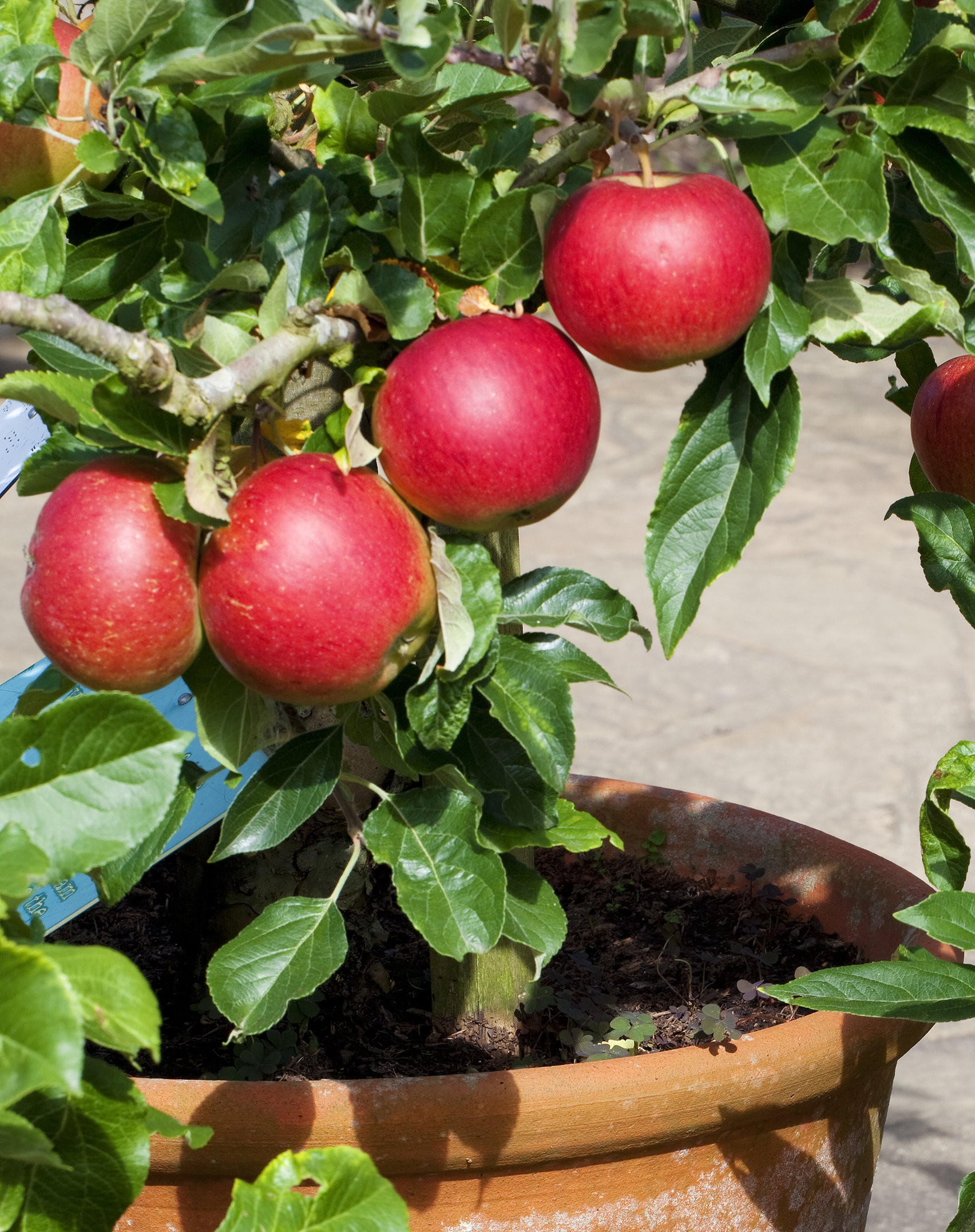
(Image credit: Leigh Clapp)
It is possible to include a lot of fruit in your small vegetable garden ideas. Most fruit prefers a sunny position, making them ideal when planning roof garden ideas, but if your garden is in semi-shade, many of the choices below will still do well.
These can also be lovely growing in pots in a range of patio ideas, so they are close to hand when you're tempted to pluck a ripe fruit off the bush as you sit outside enjoying your garden.
GOOSEBERRY BUSHES can be trained against a wall and do well in a large pot or container with regular watering and feeding. They love a sunny spot but will also fruit in shade and need a free-draining moist soil. Prune annually in late autumn or winter.
STRAWBERRIES are easy to grow in pots, in the border or hanging baskets. They need rich, fertile soil and a sunny spot. Plant bare-root runners in late spring to early summer. Keep the compost moist and feed when the flowers appear.
BLUEBERRIES need an acid soil to do well so use well-drained ericaceous soil for containers. Don't let it outgrow the space, and repot into a slightly larger size. Feed with a rhododendron fertilizer and water well. They are self-fertile and you could have a couple in containers that fruit at different times.
APPLES can grow in pots. Select ones that have been grafted onto a container rootstock. M27 is the smallest dwarf size and M9 is still dwarfing but more vigorous. You can also espalier as step-overs or against a fence, or plant into a flowerbed. Options include Fiesta, Discovery, Sunset and Falstaff.
CITRUS TREES, such as lemons and kumquats, can be grown in containers outdoors in summer and over-wintered inside. Mix one part sand or grit to four parts soil potting mix. use rainwater to water, ideal for sustainable small garden ideas.
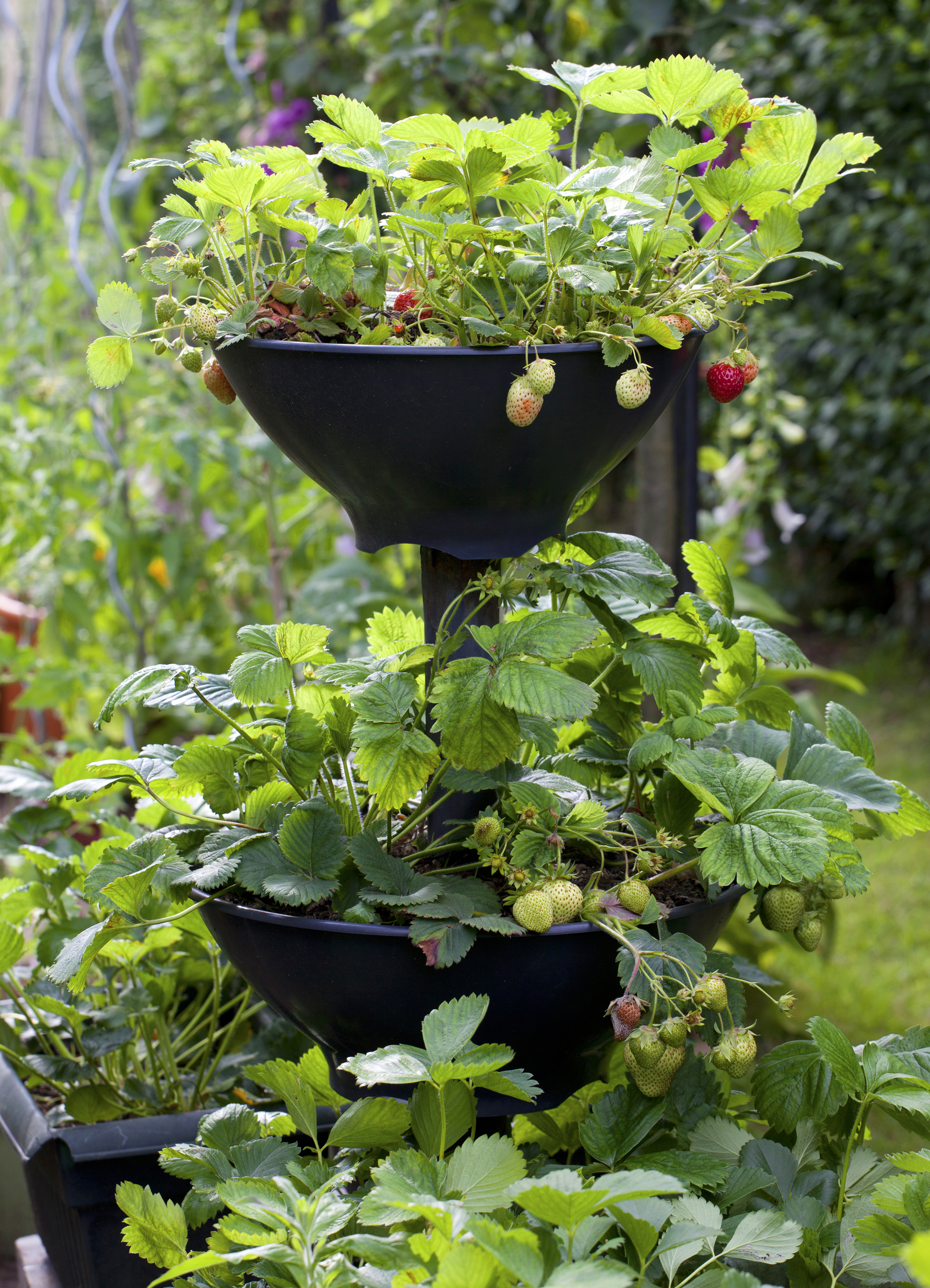
(Image credit: Leigh Clapp)
What can I put in a small vegetable garden?
In a small vegetable garden, it is sensible to plant compact fruit and vegetable varieties that won't take up too much space - many seed and gardening websites list the best compact crops to grow in a restricted space.
Choose vegetable and fruit crops that can be continually harvested, which keeps them producing, rather than ones that are removed completely. Your space needs to be as productive as possible.
How do you start a small vegetable garden for beginners?
It is easy to start a small vegetable garden, and before long you can be enjoying the taste and flavor of your own homegrown crops.
To grow well and be productive, vegetable and fruit plants ideally need:
- at least six hours of sunlight a day
- an open spot for good air circulation
- protection from strong winds
- soil that is loose, rich and drains well
How do you lay out a small vegetable garden?
Stagger the planting for small vegetable garden ideas so there is always something to harvest.
Longer-term crops, such as cabbages and broccoli, can be interplanted with faster-growing options, including cut-and-come-again salad mixes, pea shoots, mizuna, rocket and radishes, which are ready to eat from about six weeks from seed.
Many crops can be continually picked, including cherry tomatoes, chillies, chard, beans and snow peas.
For north-facing or spaces with less sunlight like some narrow, long gardens, try shade-tolerant edibles, such as spinach, chard, kale, rocket, sorrel, Asian and salad leaves, Alpine strawberries, rhubarb, currants, mint, bay, coriander, chives, parsley, chamomile and tarragon. There are many to try: Sow and savor.
What vegetables can you grow in a small space?
There are many crops you can consider when planning small vegetable garden ideas, but here are some of the best crops for small spaces:
SALAD LEAVES AND LETTUCES are easy to grow, great for beginners and definitely taste better picked fresh. Cut-and-come-again leaves will give you a selection for weeks, months even, and by sowing a succession you can enjoy them through the year.
BEANS, including dwarf varieties, are one of the easiest veg to grow. They need full sun, good drainage and are frost sensitive, so plant after frosts have passed. Choose a pot at least 16 inches in diameter, and make a tripod using three sticks tied together.
KALE lasts well into winter. Just a few plants are enough to keep you in supply for nearly the whole year. They are frost hardy – in fact a light frost improves the flavor, making leaves that may have become bitter at the end of summer, sweeter.
BEETROOT seeds are a cluster of four or five separate seeds, so planting a single seed in a 5-liter pot can yield a number of plants – ideal for small vegetable garden ideas. Look for smaller baby beets for growing in containers. Grow in full sun, although they can survive some shade.
CHARD is very productive as well as stunning to look at, and the leaves are cut-and-come-again so won't leave holes in your ornamental planting.
TOMATOES, especially the mini varieties, grow well in pots, grow bags and hanging baskets. Plant young plants in May, water evenly and feed with a tomato fertilizer for continuing cropping, and consider the best crops for tomato companion planting.
CURRANTS are space saving trained on walls, or can also be grown in containers. They prefer well-drained, moisture-retentive soil in full sun, but tolerate part shade. Water well in dry periods, prune when dormant and harvest them in clusters.
Vegetable Gardening For Small Spaces
Source: https://www.homesandgardens.com/ideas/small-vegetable-garden-ideas
Posted by: waitbrobbegreare1964.blogspot.com

0 Response to "Vegetable Gardening For Small Spaces"
Post a Comment